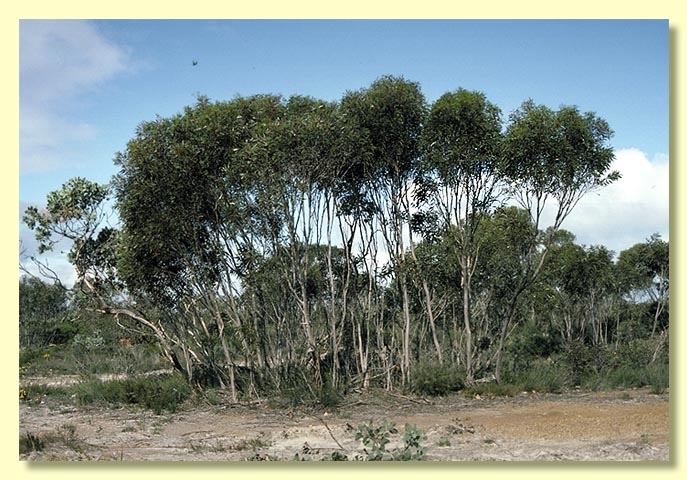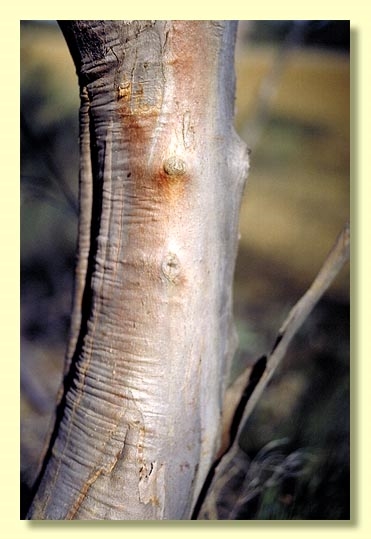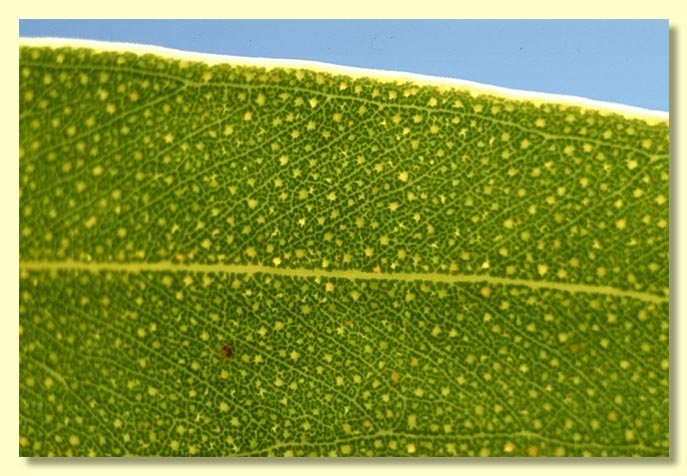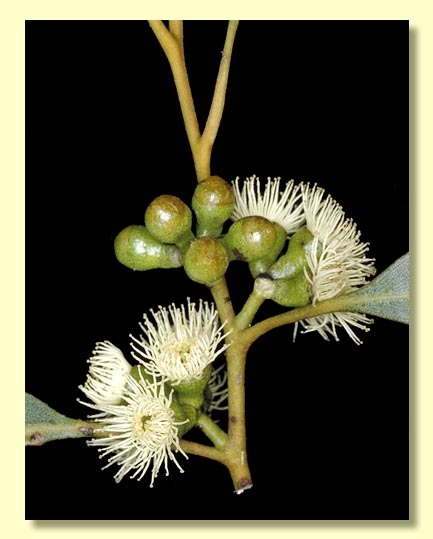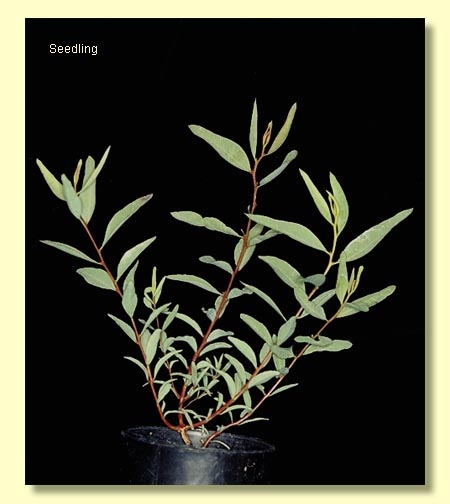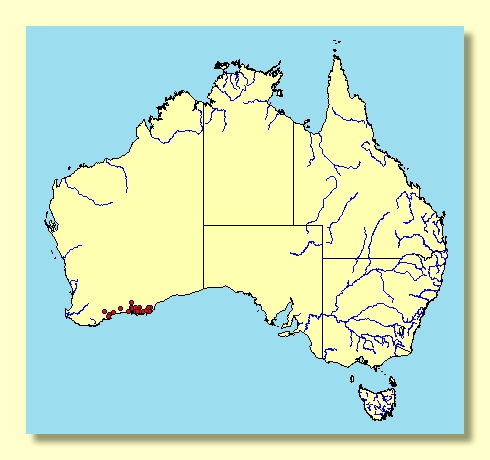Euclid - Online edition
Eucalyptus micranthera
Eucalyptus | Symphyomyrtus | Bisectae | Destitutae | Micrantherae | Micrantherae
Bark smooth throughout, shedding in ribbons, light grey to pinkish grey and yellow-grey.
Branchlets lacking oil glands in the pith.
Juvenile growth (coppice or field seedlings to 50 cm): stems rounded in cross-section; juvenile leaves soon shortly petiolate, sub-opposite becoming alternate, lanceolate, to 9 cm long, 1.5 cm wide, greyish green to light green.
Adult leaves alternate, petioles 0.5–2.5 cm long; blade narrowly lanceolate to lanceolate, (5.7)6–11.5(12) cm long, 0.8–2.5 cm wide, base tapering to petiole, margin entire, apex finely acute, usually glossy, green to grey-green, side-veins usually acute, reticulation moderate to dense, intramarginal vein remote from margin, oil glands large, intersectional, yellow.
Inflorescence axillary unbranched, peduncles 0.2–1 cm long, buds 7 or 9. Mature buds ovoid or tending to cylindrical (0.7–1 cm long, 0.4–0.7 cm wide), sessile or with short square pedicels (pedicels 0–0.4 cm long), scar present, operculum conical to rounded and apiculate, stamens inflexed, anthers small, globoid to oblong, versatile, dorsifixed, dehiscing by short oblique slits, style long and straight inserting in central depression at the ends of the 3 or 4 raised ridges on ovary roof marking the suture lines, stigma blunt to rounded, locules 3 or 4, the placentae each with 4 vertical rows of ovules. Flowers creamy white often smelling like bananas, the weathered stamens may persist long after flowering.
Fruit sessile to shortly pedicellate (pedicels 0–0.3 cm long), truncate-globose to more or less hemispherical, with a thick rim, 0.6–1 cm long, 0.7–1 cm wide, disc level, valves 3 or 4, at rim level.
Seeds brown to grey-brown, 2–3 mm long, ovoid or slightly flattened, dorsal surface smooth to shallowly reticulate, hilum ventral.
Cultivated seedlings (measured at ca node 10): cotyledons Y-shaped (bisected); stems rounded in cross-section; leaves sub-sessile becoming petiolate, opposite for 6 to 12 nodes, early leaves linear then lanceolate or ovate-elliptic, 3–5.3 cm long, 0.8–1.8 cm broad, base tapering, apex ± rounded, margin entire or with distant warts, green to grey-green. Lignotuber obvious at 1 or 2 nodes.
Flowering has been recorded in April, May, July, August and September.
A mallee endemic to Western Australia, found only in southern coastal and subcoastal areas west and east of Esperance. The bark is smooth, adult leaves are usually glossy green and buds and fruit sessile or shortly pedicellate.
Eucalyptus micranthera belongs in Eucalyptus subgenus Symphyomyrtus section Bisectae subsection Destitutae because buds have two opercula, cotyledons are Y-shaped and branchlets lack oil glands in the pith. Within this subsection E. micranthera is closely related to only three other species, E. jutsonii (from north of Kalgoorlie), E. bakeri (from northern New South Wales and southern Queensland) and E. mannensis (from central Australia to Shark Bay area) and with them forms series Micrantherae. These four species share a peculiar three-lobed ovary roof in which the base of the style is inserted. Of these only E. micranthera is smooth-barked.
Within its natural geographic range E. micranthera is easily distinguished by the combination of smooth bark, broad adult leaves, sessile obese buds and tightly clustered and sessile fruit.
Eucalyptus micranthera is one of three or four species in the genus which contains quantities of the volatile oil (an alcohol) 4-methylpentan-2-ol in the leaves and flowers and which is detectable, by crushing, as a banana-smelling oil rapidly lost due to its volatility. The related E. jutsonii, E. bakeri and E. mannensis all lack this compound.

